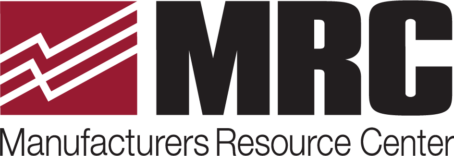Advanced robotics systems and other technologies promise to reinvigorate U.S. manufacturing. Robotics, artificial intelligence, 3D printing and nanotechnology are disruptive technologies that could lead to a stronger manufacturing sector.
Wed, 2012-08-22 10:52
Michele Nash-Hoff, president, ElectroFab Sales
While the state of American manufacturing has been grim for the past decade, the “reshoring” trend and new technologies are making the outlook for the future of American manufacturing look brighter than it now appears.
In the past few years, the key factors for returning manufacturing to America have been quality problems, rising labor costs, intellectual property theft, rising shipping costs, long lead times for product delivery from Asia, and the cost of inventory for the larger lots you have to buy from Asia to get the cheaper prices.
Now, Harry Moser’s Total Cost of Ownership worksheet calculator is helping companies quantify the hidden costs of doing business offshore, enabling more companies to make the decision to reshore manufacturing. According to Moser, founder of the “Reshoring Initiative,” about 10% of companies nationwide are bringing manufacturing back to America from Asia. It is a pleasure to read frequent stories about even large companies such as Dow Chemical, Caterpillar, GE, and Ford starting to move some manufacturing back to the U.S. from China.
“But rising costs and political pressure aren’t what’s going to rapidly change the equation.” according to Vivek Wadhwa, Vice President of Academics and Innovation at Singularity University. “The disruption will come from a set of technologies that are advancing at exponential rates and converging. These technologies include robotics, artificial intelligence (AI), 3D printing, and nanotechnology. These have been moving slowly so far, but are now beginning to advance exponentially just as computing does.”
ROBOTICS: In the past, large American food product companies like General Mills and Kraft Foods, as well as the automotive industry, have been the biggest user of complex robotic systems. But, today’s robots are smaller and cheaper ─ they are really specialized electromechanical devices run by software and remote control designed to perform specific tasks in the manufacturing of products for a variety of industries. These robots, cost-effective for lower production volume than those used in the food and automotive industry, are enabling more companies to utilize this technology.
ARTIFICIAL INTELLIGENCE: AI is really the software that makes computers, robots, and even unmanned aircraft and space vehicles run in an “intelligent” manner. Unmanned vehicles have dominated the sky in the “war on terror” in Iraq and Afghanistan and are now being used to provide surveillance along our international border with Mexico. The unmanned rover, “Curiosity,” traversing the surface of Mars is an example of the latest AI technology.
ADDITIVE MANUFACTURING: “Additive manufacturing is the process of producing parts by successive melting of layers of material rather than removing material, as is the case with conventional machining. Each layer is melted to the exact geometry defined by a 3D CAD model. Additive Manufacturing allows for building parts with very complex geometries without any sort of tools or fixtures, and without producing any waste material,” explains Arcam AB’s website.
This process, also known as 3D printing, is turning product designs into reality for a fraction of the cost of past manufacturing technologies. The application of this technology started as a way to make prototypes faster and cheaper. What is great about parts made by this process is that they are not just the fragile prototype parts previously made by stereo lithography technology; parts made by 3D printing can function as production parts.
Additive Manufacturing Becoming More Accessible
A simple tabletop 3D printing device, such as MakerBot’s Replicator, is now down to about $1,700 for use in home workshops, making the technology more accessible to students, researchers, do-it-yourself enthusiasts, hobbyists, inventors and entrepreneurs.
Millions of dollars of government-funded research in additive manufacturing has led to breakthroughs and cost reduction in the utilization of this technology. Large, complex geometry parts that had to be made by casting and forging with expensive tooling are now being made by laser sintering of metals such as tool steel, stainless steel, cobalt chrome-moly, and other steel alloys. While Selective Laser Sintering (SLS) and Direct Metal Laser Sintering (DMLS)began as a way to build parts early in the design cycle, it is now being used to manufacture end-use parts. Depending on the material, up to 100% density can be achieved with material properties comparable to those found with traditional manufacturing methods.
There are many applications for the laser sintering method of additive manufacturing in the aerospace and defense industry because of the low volume requirements. The cost of amortizing expensive casting and forging tooling into low volume production was the main reason for the $600 hammers and $900 toilet seats of the defense spending scandals 20 years ago.
Even the tooling to make simple injection molded plastic parts can now be made by this technology, helping keep some plastic injection molding work in the U. S. that used to go to China.
NANOTECHNOLOGY: We are just beginning to see advances in nanotechnology that will affect manufacturing in the next decade. Nanotechnology(sometimes shortened to “nanotech”) is the manipulation of matter on an atomic and molecular scale. Generally, nanotechnology works with materials, devices, and other structures with at least one dimension sized from 1 to 100 nanometers.
